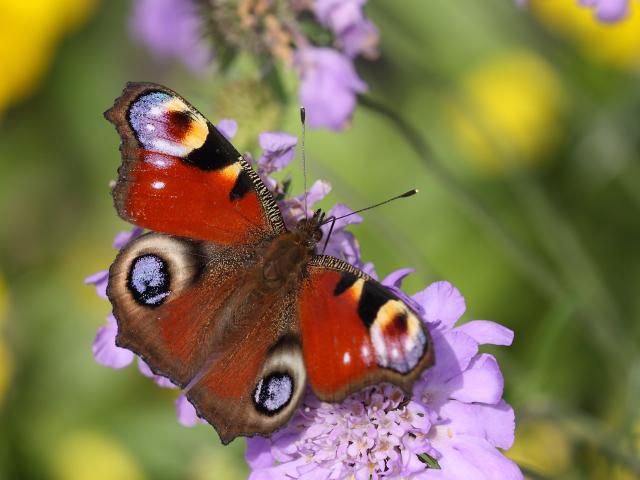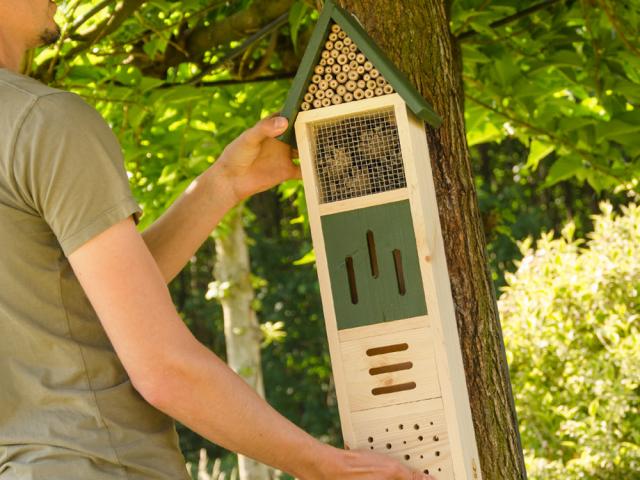
A wildlife-friendly garden doesn't have to be wild and overgrown and it can look attractive all year round. Grow a wide variety of plants and you'll offer food and shelter for all sorts of wildlife.

Butterflies and moths will visit any garden, especially when they have a reliable source of nectar, as this provides them with energy to fly and find a mate. An area full of nectar rich plants will help attract a variety of species, even on the smallest balcony or terrace.
A structured approach
Creating a rich habitat is the key to providing butterflies and moths with year-round food. Try to have a mixture of large and small flowering plants, a few shrubs and a tree or two if you have space.
Ensure you choose sunny, sheltered spots when planting nectar-rich plants, butterflies in particular are drawn to warmer spots. Try and place the same types of plant together in a block, so they are easier for flying insects to find.
Be natural
A well-planned garden can provide a mix of vegetation, light, shade and shelter by using plants of different shapes, sizes and growth characteristics, planted in borders with wavy edges.
A variety of features will attract more wildlife too. For example, different birds and insects use different parts of the tree and shrub canopy in which to feed or shelter.
Go wild

Overly tidy gardens are not great for wildlife, but that doesn't mean you have to let your garden run completely wild!
Why not leave old plant material behind the back of borders or in other places out of sight. Many moth caterpillars feed on the native plants that we may consider to be weeds and common garden butterflies, such as the Red Admiral and Comma, lay eggs on stinging nettles. Butterflies and moths will feed on the nectar of many traditional garden flowers but allowing some weeds and long grass to grow in your garden will encourage your visitors to breed.
You can also add butterfly and insect houses to your garden for additional shelter and nesting sites.
Planning and creating a wildlife-friendly garden
A good wildlife garden is more than just a corner of a garden left to go wild. Whether you are creating a new wildlife garden, or have an established one, think of it as a nature reserve and you are the warden.
Soil type, drainage and climatic conditions play a big part in what can grow in your garden. If you are creating a new garden, look at what grows locally in the wild and in other gardens for ideas. You cannot force plants to grow where they don’t want to, so look to see what flourishes where in your garden. Major changes are harmful, so work with what you have. If any major pruning or removal is necessary, undertake it over several winters to give wildlife time to adjust.
CJ Wildlife are proud to be working in partnership with Butterfly Conservation. For more hints and tips on making the perfect wildlife garden visit www.birdfood.co.uk or call FREEPHONE 0800 731 2820 to find out more. Plus as a Butterfly Conservation member, you can save 10% off when you buy from CJ Wildlife, simply use discount code UKBCM19 when you order.
Butterfly Conservation works with a wide range of businesses to deliver our conservation work nationwide. We are always looking to understand our partners’ corporate social responsibility (CSR) and marketing objectives and provide bespoke, long-term solutions for businesses investing with us.
Our partnerships make a difference. To customers, to your employees and the butterflies and moths we protect.
Contact me to find out more: Clare Sunderland [email protected]

